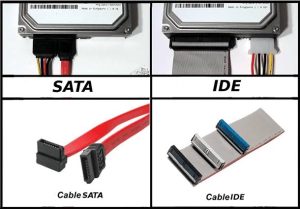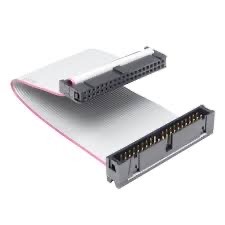The Serial ATA (SATA) interface has been the standard interface for hard drives since its introduction in 2003. However, before SATA, there were several other interfaces that were used to connect hard drives to computers. In this article, we’ll take a closer look at the hard drive interface that preceded SATA and why it’s making a comeback in retro computing. We’ll also discuss how to spot the difference between SATA and IDE.
The interface that came before SATA was Integrated Drive Electronics (IDE), also known as Advanced Technology Attachment (ATA). IDE was introduced in 1986 and quickly became the dominant interface for consumer-grade hard drives. IDE used a parallel interface to transfer data between the hard drive and the motherboard, and its affordability and simplicity made it a popular choice for system builders.
SATA, on the other hand, uses a serial interface, which allows for faster transfer rates and thinner, more flexible cables. SATA also enables hot-swapping of drives, making it easier to replace failed drives without having to power down the system.
So how can you tell the difference between SATA and IDE? The easiest way to identify the interface is to look at the connector on the hard drive. IDE uses a 40-pin or 80-pin connector, while SATA uses a 7-pin connector. SATA cables are also much thinner and more flexible than IDE cables. Additionally, SATA drives have a distinctive L-shaped data connector, while IDE drives use a rectangular connector.

In recent years, IDE has been making a comeback in retro computing. Many vintage computers and game consoles used IDE hard drives. IDE’s simple and reliable interface makes it an ideal choice for retro computing enthusiasts who are restoring and maintaining vintage systems. The availability of IDE adapters also ensures that it will continue to be a part of retro computing for years to come.
In conclusion, the hard drive interface that came before SATA was IDE. IDE was a popular interface for consumer-grade hard drives for many years, but its limitations led to the development of newer and faster interfaces such as SAS and Fibre Channel. However, it is making a comeback in retro computing due to its simplicity and reliability. By understanding how to spot the difference between SATA and IDE, you can ensure that you are using the right interface for your system, whether it’s modern or vintage.
